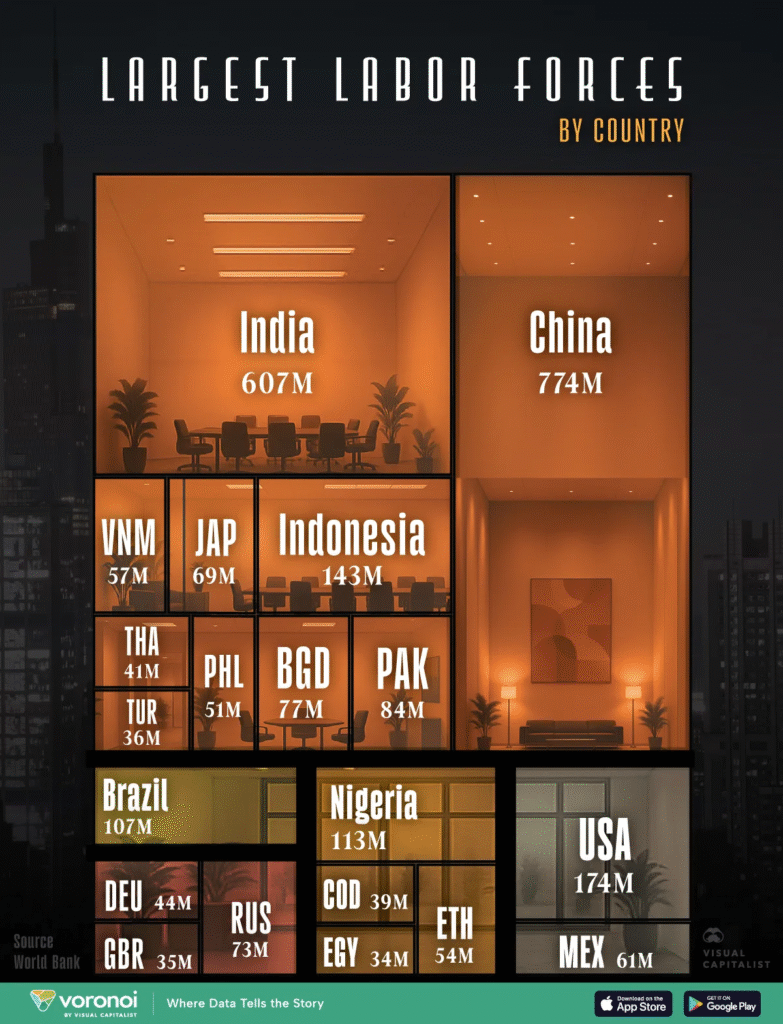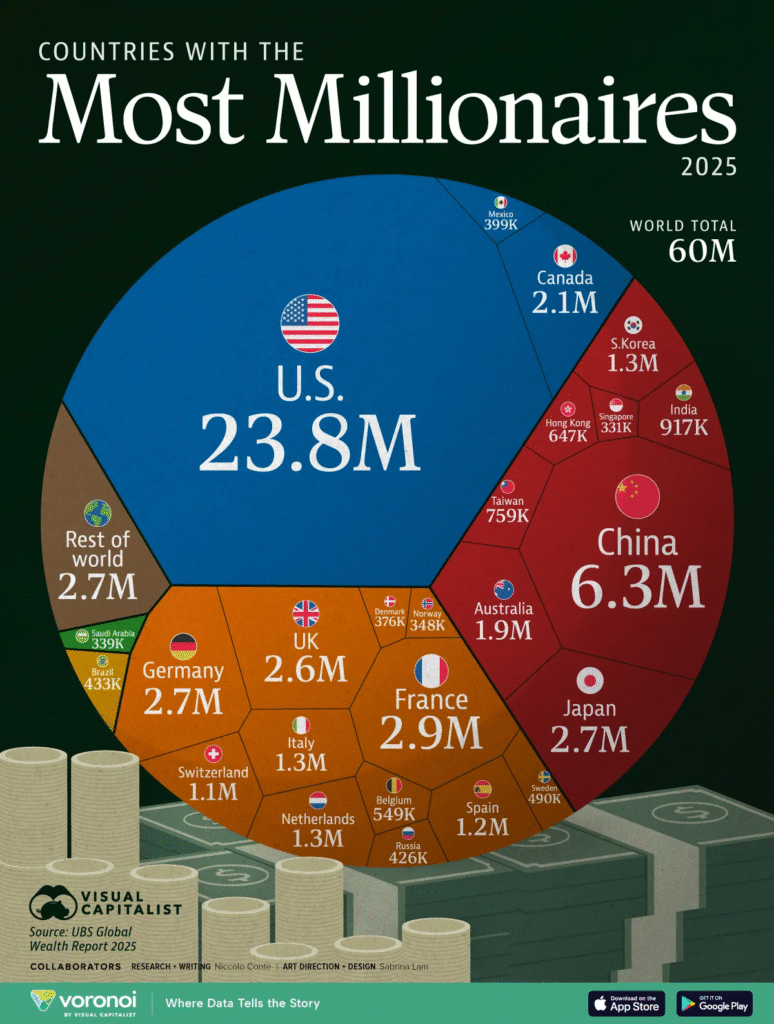Does the size of a country’s workforce determine its wealthiest citizens?
Beyond Headcount—The Real Drivers of Wealth
In a world shaped by rapid technological change and evolving labor dynamics, this post explores which nations lead in workforce size, where millionaires reside, and why capital concentration often defies population trends.
Recent research by Visual Capitalist sheds light on both the world’s largest workforces and the distribution of wealth among its richest citizens.

via visualcapitalist
Unsurprisingly, Asia dominates the global workforce, with China and India accounting for over 1.3 billion workers.
Although the U.S. trails far behind China and India in absolute workforce size, it maintains a strong position as the world’s third-largest labor force with 174 million workers.
Africa’s workforce is rapidly expanding – with potential to double by 2050.
Following the Wealth Flows
As we know, workforce isn’t the only factor that influences where wealth flows. For example:
- Global trade & resource distribution,
- Financial & governmental policies,
- Urbanization & tech Infrastructure,
- And, access to opportunities
Where Wealth Accumulates
In 2025, we’ve surpassed 60 million millionaires worldwide.
Together, this group holds over $226 trillion in wealth.

via visualcapitalist
America, China, and France top the list – holding over half the global total. If you were to imagine the list as 10 people, four would live in America, one would live in China, and the rest would be scattered across the globe.
France, Germany, and the UK, are relatively small populations boasting outsized ratios of millionaires.
Notably, almost 1/10 American adults are millionaires (Luxembourg and Switzerland top this ratio with 1/7). That surprises me.
Also, while major cities like New York, Los Angeles, and San Francisco remain millionaire hubs, Scottsdale, Arizona, actually boasts the fastest millionaire growth over the last decade.
Ultimately, I think it’s clear that a large labor force doesn’t necessarily translate into a large population of millionaires. Countries like India and Indonesia rank among the biggest contributors to the global workforce, yet their per capita wealth remains modest. Meanwhile, nations such as the United States, Japan, and Germany — home to far smaller workforces — consistently dominate global millionaire rankings.
Why Efficiency Beats Size
Countries like the United States demonstrate how access to markets and capital, combined with robust innovation ecosystems, drive wealth far beyond population scale.
The difference lies less in the number of workers and more in the structure of opportunity: productivity, access to capital, innovation, and financial markets create wealth far faster than population alone. In short, a big workforce builds economies — but efficient systems and upward mobility build millionaires.
Economic opportunity grows when connections (between people, ideas, and markets) multiply — think of a telephone network: one phone is useless, but as more connect, the system’s value rises exponentially.
Disruptive innovation often happens in small, focused markets before scaling. Early adoption, not just raw numbers, signals where outsized returns will come.
As AI continues to shift productivity from in-person humans to digital agents, the very nature of value, employment, and opportunity will likely undergo a profound transformation. It will also change what we believe is possible.
For example, I expect to see a one-person Unicorn as artificial agent technologies become more capable, scalable, and adaptive.
Conclusion: Building Pathways to Prosperity
In summary, a large labor force may grow economies, but upward mobility and innovation are the true engines of millionaire creation. For leaders aiming to foster national prosperity, the goal should be cultivating efficient, inclusive systems — not merely expanding the workforce.
We live in interesting times!

Leave a Reply